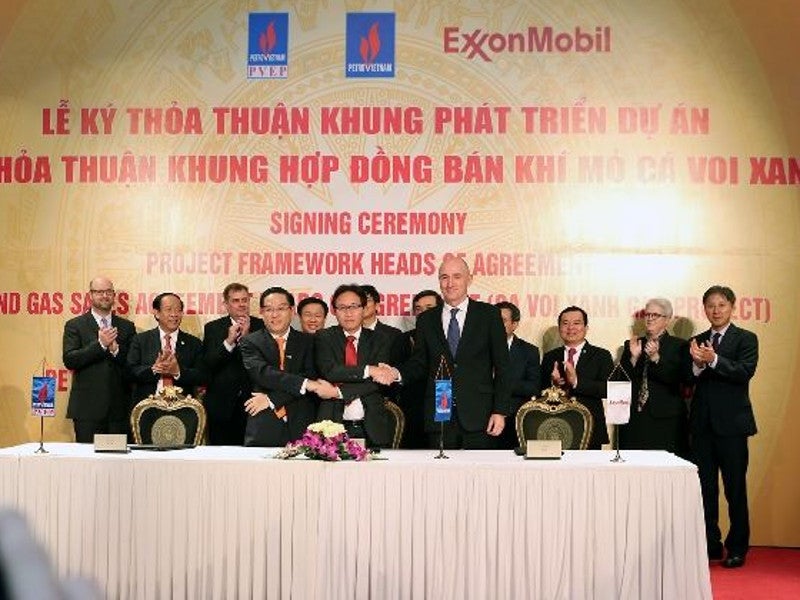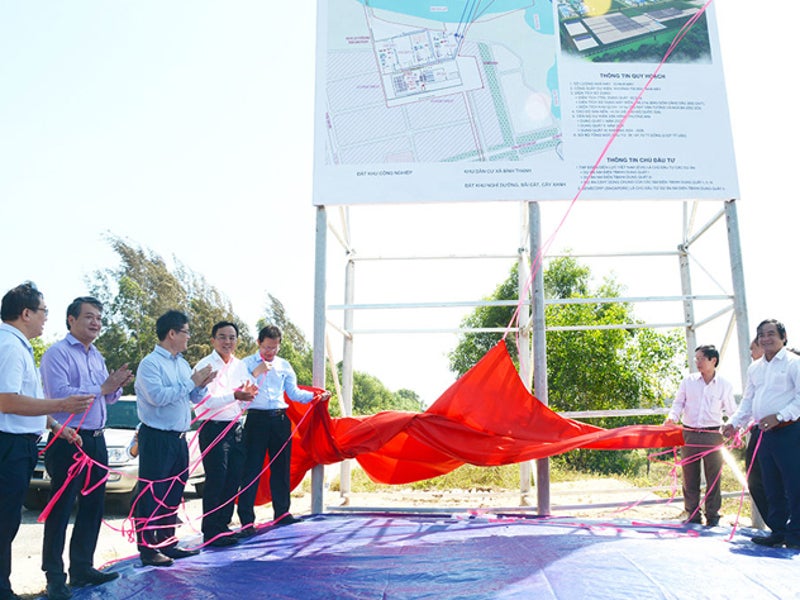Ca Voi Xanh is a natural gas field situated in block 118 of the South China Sea. Also known as the Blue Whale field, it is the biggest gas field discovered offshore Vietnam.
The Ca Voi Xanh gas field is being developed by a joint venture of PetroVietnam, PetroVietnam Exploration Production Corporation (PVEP) and ExxonMobil, which will also serve as the operator.
Announced in 2017, the project is planned to be developed with an estimated investment of $10bn, the final decision on which will be taken in 2020. First oil from the project is expected to be produced in 2023.
The field will supply natural gas to an integrated gas-for-power development along with petrochemical production in Vietnam. It is expected to generate $20bn in revenue for the Vietnamese Government and reduce the cost of power by 20%, as well as offset carbon emissions by up to 45%.
Ca Voi Xanh field location
The Ca Voi Xanh field is located approximately 100km offshore central Vietnam in block 118 of the South China Sea.
Block 118 lies in the southern Song Hong basin, which is located between the Qiongdongnan and Phu Khanh basin. The block stretches from the shoreline to Vietnam’s 200 nautical mile exclusive economic zone.
Ca Voi Xanh field discovery, appraisal, and reserves
The Ca Voi Xanh gas field was discovered by the 118-Ca Voi-Xanh-2X discovery well in 2011. The discovery well encountered a gas reservoir with 30% CO2 content in the Da Nang Carbonate.
Two appraisal wells, namely 118-Ca Voi Xanh-3X and 4X, were drilled in 2012 and 2015. The 3X well also encountered the same CO2 content and gas-water contact as the discovery well.
The three wells penetrated approximately 200m of the carbonate reservoirs.
The Ca Voi Xanh gas field is estimated to contain approximately 150 billion cubic metres (bcm) of gas reserves.
Ca Voi Xanh field geology details
The Ca Voi Xanh field is an isolated carbonate platform, which settled on the Tri Ton horst structural high. The horst is formed from trapped time-equivalent clastic rocks, which led to the deposition of carbonates of the Middle Miocene (Langhian and Serravallian) era.
The main constituents of the older Langhian carbonates are deeper water corals, along with large and small benthic foraminifera, whereas the Serravallian carbonates comprise shallow water coralline red algae (rhodolith) and large benthic foraminifera (LBF).
Ca Voi Xanh field development details
The Ca Voi Xanh field development plan comprises the drilling of ten production wells, as well as installation of an offshore platform in 242m of water to separate gas and water, and two subsea systems. An 88km-long pipeline will be laid to transport the produced gas to the shore.
A gas treatment plant with a capacity of 737 million cubic feet per day (Mcfd) of gas (expandable up to 900Mcfd) will be constructed onshore to process the gas. The processed gas will be transported by pipelines to power plants for generating power.
PetroVietnam is expected to develop the gas treatment plant and power plants, along with Vietnam Electricity and Sembcorp, while ExxonMobil will build the pipeline.
Gas supply details
The first phase of the field development plan will supply gas to four power plants, which will together generate 3GW of power.
Two of the power plants will be located in the Dung Quat Economic Zone (EZ), while the other two will be located in Chu Lai EZ (Quang Nam).
The expansion phase, when completed, will supply gas to either a proposed fifth power plant of 750MW capacity or a petrochemical plant.
Contractors involved
The pre-front-end engineering and design (pre-FEED) works for the Ca Voi Xanh field were completed by Saipem.










